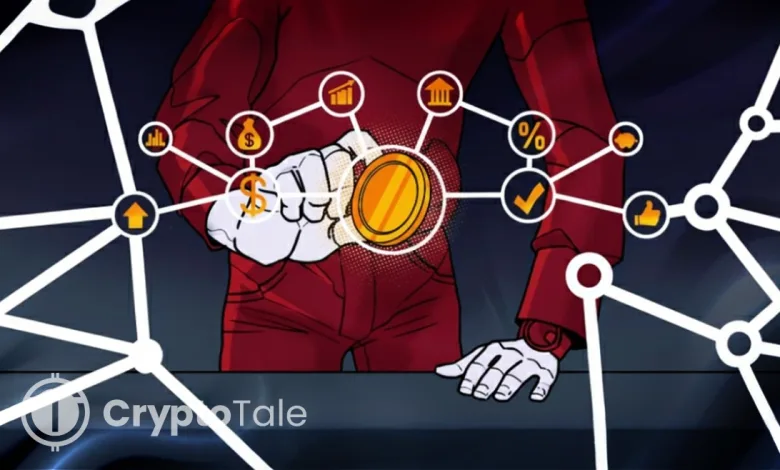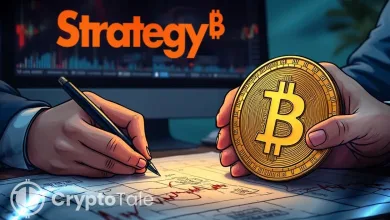From Scarcity to Utility: Tokenomics Steers Digital-Asset Markets

Tokenomics, a blend of token and economics, describes the rules governing the creation, distribution, and use of digital tokens. It goes beyond setting a supply cap or attaching a price tag. In crypto, tokenomics have become a core design element for blockchain projects; they influence user behaviour, network security, and long‑term value.
A guide notes that tokenomics “is product design at its core” and must answer fundamental questions: Why does this token exist? Who earns and spends it? What gives it value beyond speculation?. Good tokenomics aligns the interests of users, developers, validators, and investors by providing each group with real reasons to engage.
The primary components of tokenomics include:
- Utility: A token without utility is purely speculative. Tokens must have clear use cases—paying fees, accessing services, or participating in governance—to create demand.
- Supply mechanics: Supply can be fixed, inflationary, deflationary, or elastic. The model chosen dictates scarcity and incentives.
- Demand drivers: Demand arises from transaction fees, staking rewards, lending, or yield opportunities; strong demand supports price and network activity.
- Incentive design: Tokens incentivise participation by rewarding validators, developers, and users. Poor design can encourage hoarding or speculative dumping.
- Governance: Many tokens grant voting rights over network upgrades or treasury spending, tying economic value to decision‑making power.
A well‑structured crypto token economy shapes capital flows, governance, and community participation. Conversely, poorly designed tokenomics can lead to inflation, manipulative incentives, and even collapse—Terra’s algorithmic stablecoin failure is a notable example.
Supply Models: Scarcity, Inflation, and Algorithmic Designs
Supply models set the tone for a token’s economic behaviour.
Fixed Supply Tokens
Tokens with a hard cap emulate digital scarcity. Demand rising against a fixed supply creates upward price pressure, but if there are few use cases, it can also encourage hoarding and reduce liquidity. However, scarcity alone cannot sustain value without meaningful utility.
Bitcoin is the best‑known example. Its total supply is capped at 21 million BTC, and the block reward halves roughly every four years. Bitcoin’s design appeals to long‑term investors who view it as digital gold.
Inflationary Tokens
Inflationary tokens continually mint new supply to reward validators, miners, or contributors. Inflation tied to productive activity (staking or building) can secure the network and keep participants engaged. Risk arises when inflation outpaces utility, diluting value and creating sell pressure.
Examples include Dogecoin—with no supply cap and about 5 billion DOGE added each year—and early versions of Ethereum before it transitioned to proof of stake.
Deflationary Tokens
Deflationary mechanisms remove tokens from circulation through burning, buybacks or transaction taxes. When paired with healthy demand, deflation can support long‑term price growth. Too much deflation, however, may harm liquidity or discourage spending.
Examples include Binance Coin (BNB) burning a portion of its trading‑fee revenue, and Ethereum burning base transaction fees following EIP‑1559.
Elastic or Algorithmic Supply
Elastic or algorithmic supply models adjust total supply to target a price peg or economic balance. These models are experimental and risky; they depend on market confidence and can unravel quickly if incentives fail.
Ampleforth rebases supply daily to stabilise its price, while Terra’s algorithm attempted to maintain the UST peg by adjusting supplies of UST and LUNA
Distribution and Incentive Strategies
How tokens are distributed at launch and over time shapes decentralisation and community trust.
- Fair launch: Everyone starts at the same time, without private sales or pre‑mined tokens. Bitcoin exemplifies this approach. It builds strong decentralisation narratives and grassroots credibility.
- Pre‑mined launches: Tokens are minted and distributed to insiders or investors before the public sale. Such models require transparent governance and clear incentives to build trust.
Allocation typically divides tokens among founders, investors, treasury and community incentives. Vesting schedules with lockups and cliffs prevent early investors from exiting immediately and align long‑term interests. Distribution strategies also include airdrops, staking rewards, liquidity mining and grants, all aimed at promoting active participation.
Why Token Classifications Matter in Crypto Economies
Utility tokens: These tokens give holders access to specific services or functions within a blockchain network. They power usage within platforms such as paying transaction fees, unlocking premium features, or participating in network activities. Examples include BNB on Binance Chain and UNI on Uniswap.
Security tokens: Digital representations of traditional assets like company equity, debt instruments, or revenue-sharing agreements. They are subject to securities laws and are typically issued through Security Token Offerings (STOs). Holders may be entitled to profits, dividends, or voting rights.
Governance tokens: These provide holders with voting power to influence protocol upgrades, treasury allocations, or other decisions. They allow communities to steer the direction of decentralized projects. AAVE and MKR are well‑known governance tokens.
Stablecoins: Tokens pegged to a stable asset (usually fiat currency) to minimize volatility. They are used as a medium of exchange, store of value, and unit of account in decentralized finance. Stablecoins can be backed by fiat reserves, collateralized by other crypto assets, or controlled algorithmically.
Non‑fungible tokens (NFTs): Unique digital tokens that represent ownership of specific items such as artwork, collectibles, or in‑game assets. Each NFT has distinct attributes and cannot be exchanged on a one‑to‑one basis with another NFT.
Payment tokens: Cryptocurrencies designed primarily for peer‑to‑peer payments and transfers. They facilitate fast, borderless, and low‑fee transactions. Bitcoin and Ethereum are typical examples of payment tokens.
Asset‑backed tokens: Tokens backed by real‑world or digital assets like real estate, commodities, or intellectual property. They allow fractional ownership and can improve liquidity by making high‑value assets accessible to a broader set of investors.
Meme tokens: Tokens inspired by internet memes or cultural trends. Though they often begin as jokes, some have evolved into thriving communities with stakeholder features, charitable initiatives, or brand partnerships.
Platform‑specific standards (e.g., BEP‑20): Token standards tailored to particular blockchains. BEP‑20 is a standard for tokens on the Binance Smart Chain, offering lower fees and compatibility with Ethereum’s ERC‑20 standard while supporting DeFi, gaming, and NFT ecosystems.
Tokenomics Across Major Digital‑Asset Networks
Bitcoin (BTC) – Bitcoin’s tokenomics revolve around scarcity and predictable issuance. Its maximum supply is 21 million BTC, and more than 19 million have already been mined as of mid‑2025. The block‑reward halving every four years reduces new supply, so issuance asymptotically approaches zero.
Ethereum (ETH) – Ethereum does not have a hard cap on supply, but the EIP‑1559 fee‑burn mechanism introduced in 2021 can make issuance net‑deflationary when network activity is high. Validators receive staking rewards (~4 % annually), and the network issues roughly 0.5–0.6 million ETH per year; more than 5.1 million ETH have been burned since EIP‑1559, but reduced fees in 2025 brought mild inflation (~0.74 %).
Binance Coin (BNB) – BNB began with 200 million tokens and employs two burn mechanisms to reduce supply toward a 100 million cap. Quarterly auto‑burns buy and destroy BNB based on price and activity, while real‑time burns destroy a portion of gas fees; these programs removed millions of tokens in 2025.
Cardano (ADA) – Cardano has a maximum supply of 45 billion ADA, with around 35 billion already circulating. The initial distribution allocated 57.6 % of tokens to ICO buyers and 42.4 % to project entities. ADA holders stake tokens to validate the network and earn rewards derived from new issuance and transaction fees; as supply nears its cap, issuance slows, making ADA progressively deflationary.
Solana (SOL) – Solana’s supply is disinflationary: inflation was 4.295 % in 2025 and will decline by 1.5 percentage points yearly until stabilising at 1.5 %. Half of all transaction fees are burned, and about 67 % of SOL is staked, reducing circulating supply. Structured token unlocks are absorbed by institutional buyers, mitigating selling pressure.
Tokenomics in Memecoins
Memecoins often lack intrinsic utility and depend on social momentum. They illustrate how tokenomics can be manipulated for short‑term excitement but may not support long‑term value without sustainable demand and transparent governance.
Dogecoin (DOGE): Started as a joke, Dogecoin operates on an inflationary model with no supply cap and mints about 5 billion DOGE each year. The high emission rewards miners and keeps transaction fees low but limits long‑term scarcity. Its value is driven primarily by community enthusiasm and speculative demand.
Shiba Inu (SHIB): Shiba Inu originally had a quadrillion‑token supply. Ethereum co‑founder Vitalik Buterin burned about 410 trillion SHIB, significantly altering its distribution and sparking speculation. This giant burn was an unusual event that reduced oversupply and highlighted the influence of token burns on market perception.
Bonk (BONK): Another memecoin on the Solana network, Bonk destroyed 1.6 trillion tokens in a community‑driven BURNmas event, representing about 1.8% of total supply. Such burns aim to create scarcity and align community interests but can be symbolic unless backed by real utility.
Benefits of Robust Tokenomics
Well‑designed tokenomics offer several benefits to the digital‑asset ecosystem:
- Network security: Rewarding validators or miners through inflation or transaction fees incentivises honest behaviour and secures the blockchain.
- Fair participation: Distribution models such as fair launches or widely distributed airdrops encourage community ownership and reduce the concentration of power.
- Value stability: Supply caps, burns, and vesting schedules help manage inflation and scarcity, supporting price stability.
- Governance and innovation: Governance tokens empower holders to steer protocol development, aligning network evolution with community interests.
- Incentivising adoption: Utility tokens fuel ecosystems by enabling payments for services, staking, lending, and participation in decentralised applications. Strong demand drivers underpin the token value.
- Regulatory alignment: As regulatory frameworks mature, transparent tokenomics—including documented supply mechanisms and distribution plans—demonstrate compliance and investor protection.
Key Terms in Tokenomics: Definitions to Know
Token issuance is the process of creating and releasing new tokens into a blockchain ecosystem. It determines how tokens enter circulation and how scarcity is managed.
Minting is the act of generating tokens according to predefined rules. Protocols may mint continuously, in fixed amounts, or under specific triggers.
Distribution defines how tokens are allocated among stakeholders. It includes allocations for teams, investors, communities, or reserves.
Pre-sale involves releasing tokens to early investors before the public launch. It provides initial funding but can affect fairness.
Vesting is the gradual release of tokens to prevent sudden sales by large holders. It stabilizes the market and supports long-term commitment.
Hybrid Models – Hybrid models combine minting with burning. They balance new supply for incentives with scarcity to preserve value.
Incentives– Incentives reward users with new tokens for activities such as staking, validating, or providing liquidity. They drive participation in the network.




